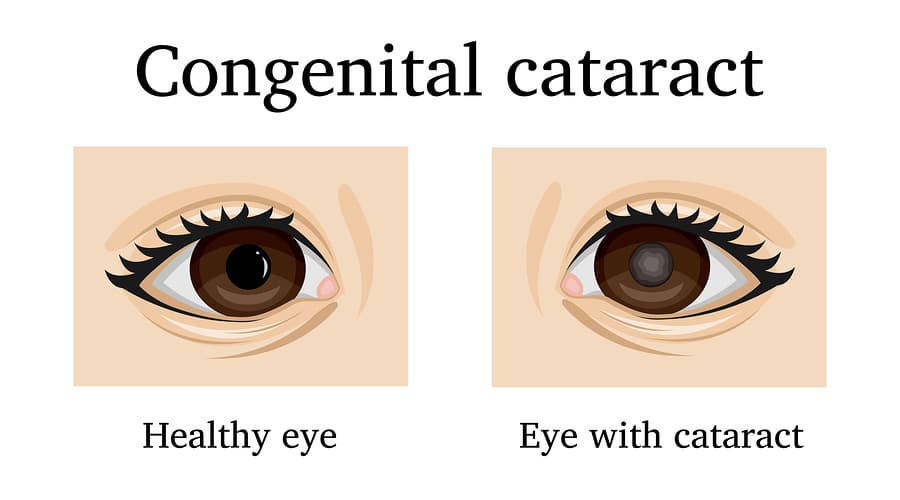The World Health Organization estimates that a third of the more than 200 million people around the world with visual impairments have cataracts. While the vast majority are over age 50, a small percentage of people are born with a cataract. This is called a congenital cataract. Fortunately, congenital cataracts are typically treatable and cataract surgery in infants is a safe and effective procedure.
How does a congenital cataract affect a developing child?
A cataract is a clouding of the eye’s natural lens. It usually starts out very small and in the beginning has little effect on vision. But, for babies born with cataracts, sometimes even small cataracts may require surgery in order to ensure that vision is clear enough for the visual system to properly develop. Because the visual system (the way the eyes and the brain work together) keeps developing until a child is about eight years old, a cataract present at birth could send unclear images to the brain.
Do congenital cataracts require surgery?
Not all congenital cataracts require surgery, but many do. When the cataracts are impede vision the only solution is cataract surgery.
Types of congenital cataracts:
There are different types of congenital cataracts.
- Lamellar cataracts are the most common type of congenital cataracts. They are usually found in both eyes and are sometimes inherited. These types of cataracts are disc-shaped. The effect of these cataracts depends on the size and density of the cataract itself.
- Polar cataracts can affect either the front part of the eye (anterior polar cataracts) or the back part (posterior polar cataracts). Anterior polar cataracts are typically very small and do not require surgery. Posterior polar cataracts are typically larger and usually have some affect on vision due to their size and location.
- Nuclear cataracts appear in the central part of the eye’s lens. They can appear dot-like or be quite dense. Because of their location, these cataracts typically impede vision to some degree.
- Cerulean cataracts are usually found in both eyes. Also known as the blue dot cataract, they appear as small, bluish dots inside the eye’s lens. This type of cataract typically does not cause vision problems or require treatment.
Causes of congenital cataracts:
So, what causes a congenital cataract? Some are hereditary, but others can be caused by diabetes, reactions to drugs, or trauma, such as a blow to the eye. They can also be caused when a pregnant mother develops an infection like measles or rubella.
Only a qualified eye doctor can determine if cataract surgery is appropriate. But with early detection and treatment, most children born with cataracts can go on to experience a good level of vision for the rest of their lives. And, once a cataract is removed, it cannot grow back.
Sources:
http://www.who.int/blindness/GLOBALDATAFINALforweb.pdf?ua=1
https://www.rnib.org.uk/eye-health-eye-conditions-z-eye-conditions/congenital-cataracts
https://www.allaboutvision.com/conditions/congenital-cataracts.htm
https://www.bettervisionguide.com/congenital-cataracts/
https://www.cataractsurgerycost.net/types-of-congenital-cataract/



